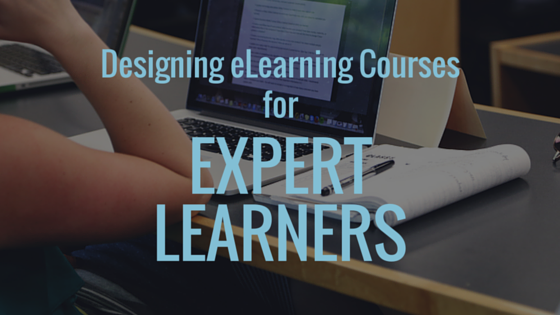Designing courses for experts versus novice learners requires very different steps and considerations. Modules intended for beginner, or even intermediate learners, cause experts to become disengaged and frustrated. To avoid this problem, designers must create courses specifically for expert learners. Of course, because designers are Content Neutral and typically not Subject Matter Experts, this can pose problems; but the following tips will help overcome these issues. expert elearners
Avoid Interactivity
This is perhaps one of the most surprising tips. Interactivity is a powerful learning tool, but it really offers the most value for novices and intermediate learners. For experts, interactive content can be distracting and time consuming, with little value in the end. For designers, it is best to focus on providing compelling content at the right level for expert learners and leave interactivity out of the mix. However, a certain amount of interactivity might be effective if implemented for problem solving activities (rather than videos or animations).
Write for the Audience expert elearners
For designers, a crucial tip is to ensure that the content written for the course is at the level of the learners. This means that the content should not condescend. Remember, these learners are experts – they are at the top of their game. Content that seems elementary to your expert users will not just be a “turn off”, but could hinder the entire process.
No Hand-holding
With novice learners, there is a need for some hand-holding during a course. That’s not the case with expert learners. In fact, these types of learners do better with a more hands-off approach. Lay out the content and provide a few supplementary options (an index or links to further reading, for instance). Assume that the learners will either “get it” or they will go in search of further explanations. Never forget that expert learners also have their own network of sources through which they can research topics and broaden their knowledge.
Organization Still Matters
When designing a course for novice learners, it is important to organize information logically, in the order they will need it. That isn’t the always the case with expert learners, but organization is still a crucial consideration. It is best to structure course content in the same way that an expert would think, which requires designers to investigate how experts in a particular field think and approach topics. This is where interviews with SMEs (subject matter experts) can be invaluable, particularly since most designers are content neutral.
Make It Count
Experts are busy. They have plenty on their plate. You can improve the eLearning process by getting to the point as quickly as possible and making it count. Keep your audience’s schedule in mind, write content that delivers value without meandering, and let them complete the course as quickly as possible without sacrificing learning quality.
Note Prerequisites
Expert learners have already gone through most of the prerequisites, but they have a lot going on in their heads, so it’s always a good idea to at least give a hat tip toward those topics. Designers can mention these upfront or provide more information as a supplemental model or appendix in the course.
Designing for experts is much different than designing for novices or even intermediate learners. Follow these tips and it will help ensure that the courses speak directly to expert learners’ needs.
